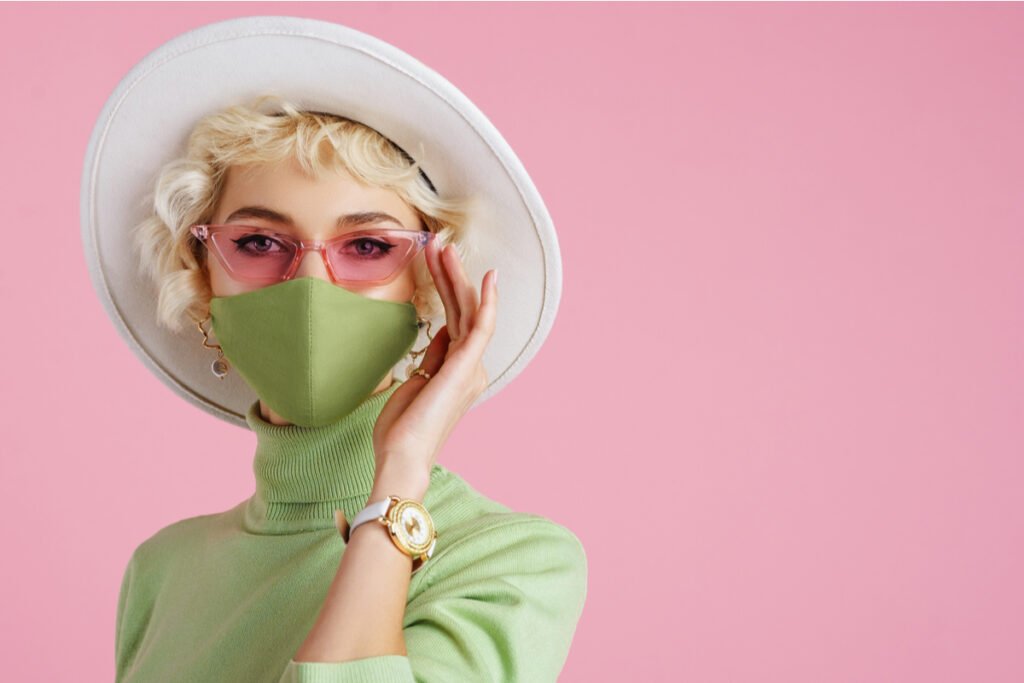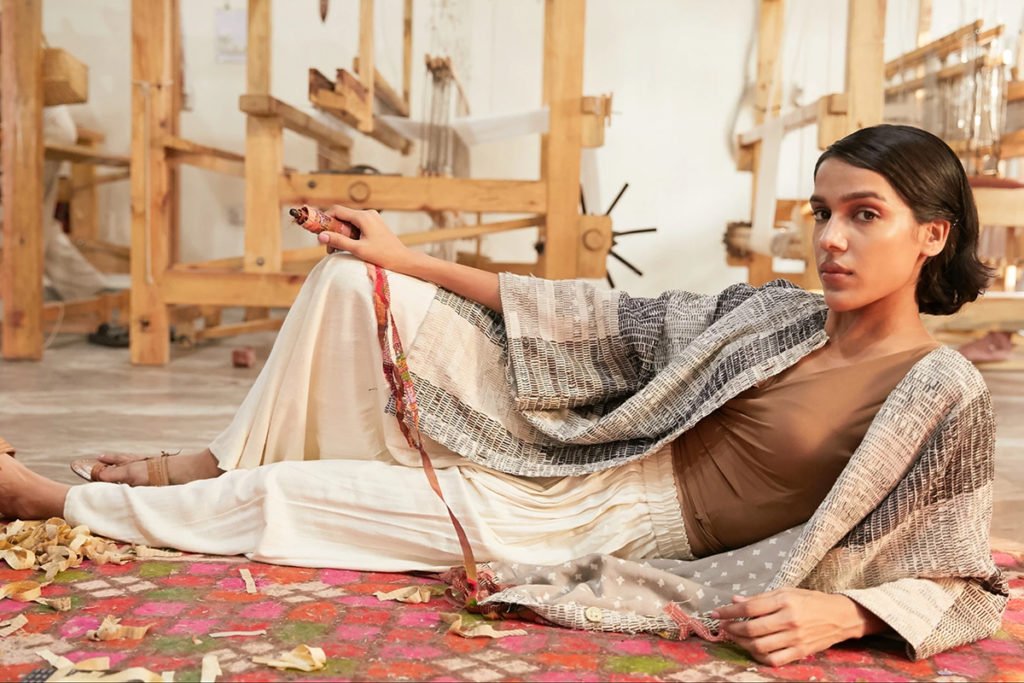It wouldn’t be an overstatement if I said that ‘culture and entertainment’ have had a significant bearing on each other since ancient times. Entertainment stems from cultural specificities while culture is transmitted and sustained through entertainment in the race of time. Culture, as broad and diverse as the term can be – is a conglomeration of customs, cuisine, dance forms, dressing styles and more galore. These particulars find a niche in entertainment – sometimes large and loud like the customary Bengali ‘Shadharon style’ of saree draping in ‘Bulbbul,’ or in the subtlest of ways like the tradition of having a cowshed inside the house in order to revere them as sacred in ‘Ivan Maryadaraman.’
However, the most popular and relatable cultural impactor in entertainment would be dance forms. We’ve all shaken a booty to numerous songs without being aware of its deep cultural richness and historical legacy. Dancing to ‘Nimboda Nimboda’ from ‘Hum Dil De Chuke Sanam’ in a friend’s Sangeet, did you have any idea that it was actually a Lavani performance, with its rich cultural heritage from Maharashtra? While gyrating to ‘Chogada Tara’ from ‘Loveyatri,’ did you know that it was a modern-day adaptation of the gloriously celebrated ‘Garba’ dance form from Gujarat? Most of the peppy numbers that we dance to in parties and practice for months to go up on stage for the Annual Days in school, are folk dances indigenous to various parts of our culturally diverse country. A dancer or not, here are ten of the most famous film songs that you must know are representations of local dance forms on the big screen.
1. ‘Bumbro’ from ‘Mission Kashmir’ – Rouf (Jammu and Kashmir)
Rouf is an artform that was cradled in the beautiful valley that crowns the country – Jammu and Kashmir. This dance which involves women dancing in two rows facing each other, is heavily based on the intricate, quick footwork which is referred to as ‘Chakri’ in their local language. It is of cultural significance during Eid and Ramzan seasons and is also performed during spring time when harvest is at the threshold. Sturdy, fast steps in line with the rendition of mystic poetry alongside gives it a rhythmic touch. Excessive jewellery, mostly bangles and headdresses are an integral add on to the traditional costume. The film ‘Mission Kashmir’ has beautifully portrayed the Rouf dance form in the song ‘Bumbro’ graced by the extremely energetic dancing and dimpled smiles of Preity Zinta and Hrithik Roshan. Although the dancers are bedecked with elaborate beads and bangles. It is played to a song in Urdu, in which the first line implies an address to a ‘black bumblebee.’ Coincidentally or consciously, the actor is seen to be in a black attire.
2. ‘Pinga’ from ‘Bajirao Mastani’ – Lavani (Maharashtra)
Lavani, which owes its origins to the Marathi word ‘Lavanya’ which means beauty, is particular to the state of Maharashtra. Although some dances feature an erotic sentiment, others feature socio-political satire. It was used in theatre and as a means of entertainment to soldiers. One of its major highlights is the nine yard long Kasta saree, a portion of which is used as a veil in the beginning of the dance. Quick movements and a sync between the feet and hands characterise the steps and requires an excellent energy level as the tempo increases with time.
Sanjay Leela Bhansali’s profound taste in integrating local art with historical movies led to the dance number ‘Pinga ga pori’ in ‘Bajirao Mastani,’ exquisitely danced by Deepika Padukone and Priyanka Chopra. Set in a context where the first wife welcomes the second wife of the ruler and they indulge in each other’s company through this dance, although not in a happy-hearty way, the women begin as two teams and merge through the course of the song.
3. ‘Nagada Sang Dhol’ from ‘Goliyon Ki Raasleela Ram-leela’ – Garba (Gujarat)
Garba, one of the most famous and celebrated dance forms of North India, belongs to the state of Gujarat. Traditionally a part of the nine-day long Navratri festival that venerates the female goddess Kaali, Garba is also performed in weddings and other festive occasions. As any other dance form, Garba has underlying metaphorical themes and like its name suggests, is focused on the womb or gharba, i.e., the female power and goddess Shakthi. Colourful and vibrant costumes are one of the main eye catchers.
‘Goliyon ki Raasleela Ram-Leela’ has a tantalizing number that made its mark even beyond the borders, fetching fame for Deepika Padukone and the director Sanjay Leela Bhansali. Clad in a heavily worked red choli and traditional jewelry associated with the dance form, ‘Nagada Sang Dhol’ shows Deepika dancing in concentric circles holding the ‘garbha deep’ (womb lamp), both of which are important elements of the dance form.
4. ‘Radha Kaise Na Jale’ from ‘Lagaan’ – Dandiya (Gujarat)
Dandiya, popularly called Dandiya-raas is a masterpiece of the Navratri festival of Gujarat, like Garba. It’s often remembered with and for the sticks that go by the same name as the dance form. It is performed in a circle where the performers are in pairs (often comprising a male and a female partner) who dance to a Kaherva, an eight beat cycle.
‘Radha Kaise na Jale’ is a famous Dandiya performance from the movie ‘Lagaan,’ which is as famous as the song. A starry stick dance by the Aamir Khan – Gracy Singh duo, this song has preserved the essence of the dance style. Gracy wears a traditional yellow ghaghra-choli and odhni while Aamir is clad in a matching talkie kurta and white dhothi. They begin the dance using the sticks and later engage in a dance dialogue. The dholak, an essential part of the Dandiya ensemble is shown in the dance sequence as well.
5. ‘Ghoomar’ from ‘Padmaavat’ – Ghoomar (Rajasthan)
Ghoomar, as a dance form is indigenous to the culture of Rajasthan. This style of dance which made it to the ‘Top 10 local dances around the world’ in 2013 derives its name from the twirling movement called ‘ghoomna’ in the local language. Ghoomar is traditionally performed in weddings and such festive occasions, by a newly wed bride who is welcomed to her marital home. Veils and an attire called ghaghra, along with heavy ornaments and elaborate jewellery make up the costume for this style.
The movie ‘Padmaavat’ received high acclaim for its portrayal of two heroes of Indian history. But what stood out was the song ‘Ghoomar’ and Deepika Padukone’s one of a kind dance performance. She gives a robust, enticing rendition of the Ghoomar dance form. Adorned in a richly worked, red ghaghra with a translucent veil, the actress and her team of Ghoomar dancers twirling in circles in a clockwise and anti-clockwise manner locking or clapping hands intermittently is worth a watch.
6. ‘Ghar More Pardesiya’ from ‘Kalank’ – Kathak (Uttar Pradesh)
Kathak, one of the first names that come rushing to one’s mind when thinking about India’s dance forms that took birth in Uttar Pradesh. It has metamorphosed over the ages – what was initially a medium to convey religious and spiritual ideas later became a court dance with sensuous attachments to its themes and has some of its movements like the twirling developed from Sufi dance.
‘Ghar More Pardesiya’ from the movie ‘Kalank’ has a classic portrayal of Kathak. Set in a palace, this dance is placed in a harem-like scenario instead of a court. The moves involve a sync between the hands and quick, brisk steps made by the feet. The song has recognised both the Hindu and Muslim versions of Kathak. The former is done through Madhuri Dixit and the dancers whose costume is in the model of a sari with an urhni (scarf) worn in a fashion that compliments the choli (blouse), typical to the Hindu style. The Muslim variant is shown through Alia Bhatt who wears a skirt with a pyjama beneath it and has the urhni or scarf like a veil over her head.
7. ‘Marainthuninn Paarkum Marman Enna’ from ‘Thillana Mohanambal’ – Bharatanatyam (Tamil Nadu)
Bharatanatyam is a colourful, vibrant dance form which originated in the Southern state of Tamil Nadu. It involves a rhythmic, strong footwork and gyrating movements, and is well regarded for its striking poses. Bharatanatyam has a heavy weightage given to facial expressions and the Chilanka (leather anklet with small metal balls) is a counterpart of the Ghunghroo in Kathak. It was primordially associated with temple performances which focussed on a particular deity. Later it also became a form of storytelling.
‘Marainthirunth Paarkum Marman Enna’ song from the Tamil movie ‘Thillana Mohanambal’ has a beautiful Bharatanatyam performance by veteran actress Padmini. This musical drama which revolves around the love story between a Bharatanatyam dancer and a Nadhaswaram (musical instrument) player uses the performance as Padmini’s subtle, implicit confrontation to Sivaji Ganesan on grounds of their love. The instruments that usually accompany a Bharatanatyam set like the veena, mridangam and nattuvangam are shown in the song. There is also a part in the dance which exclusively focuses on the Navarasas or the Nine sentiments that functions as the backbone of this dance form.
8. ‘Dola re Dola’ from ‘Devdas’ – Nautway (Kathak and Bharatanatyam)
Nautway is a combination of the North Indian ‘Kathak’ and South Indian ‘Bharatanatyam’ dance forms. Although there is a dearth of details on the development of this art form, it is widely accepted that it owes its popularity to the makers of the movie ‘Devdas.’ While the rapid, rigorous twirling motions and movements of the wrist and hands called Kasak belong to Kathak, bending sideways towards the foot and the recurring ‘nayanaanthe cha’ are characteristic of Bharatanatyam.
The energy packed number ‘Dola re Dola’ from ‘Devdas’ was even more energised by the Nautway sets of Madhuri Dixit and Aishwarya Rai Bachchan. Since the differences aren’t stark in the song and the blending of the styles have been done with commendable professionalism, identifying the steps as belonging to Kathak and Bharatanatyam requires an artistic flair with respect to dance.
9. ‘Arjuna Vallabha’ from ‘Vanaprastham’ – Kathakali (Kerala)
Kathakali, the classical dance form of Kerala along with Mohiniyattam, is known for its heavy make up which takes hours to complete. Each colour of the make up denotes a quality of the character being played. Multiple layers of clothes and ornate headpieces are a mandate. Etymologically, it can be split into two words katha-kali which means story play. This dance drama is of ritualistic importance and is based on Vedic texts, mostly the Mahabharatam.
Mohanlal is a lower caste Kathakali dancer in ‘Vanaprastham’ and his Kathakali performances make up the premise of the movie. The essence of Kathakali is imbibed with such precision in the song ‘Arjuna Vallabha’ with an amplification of its nuances such as performance timing which is from dusk till dawn, and story telling using percussion instruments such as chengalam, ellatalam, chenda, maddalam, and edakka.
10. ‘Kovalanum Kannakiyum’ from ‘Akashaganga’ – Thiruvathira (Kerala)
Thiruvathira, also called Kaikottikali (which means a dance involving clapping hands), is the traditional dance of Kerala. Performed on the Thiruvathirai (birthday of Lord Shiva), only women take part in it and the dance is implicative of them seeking blessings for marital bliss. It has a lively music rendition to it and the movements which are slow and graceful in the beginning become brisk by the end of the performance.
‘Kovalanum Kannakiyum’ from the movie ‘Akashaganga’ is a much regarded Thiruvathira performance. It is set in a traditional home called Tharavadu and the dance takes place in the inner courtyard called Nadumuttam, as is the custom. The film has retained the cultural significance of the dance through its elements such as the Nilavilakk (a huge lampstand) around which the women dance, the presence of the entire family including men as audience and the attire Settu and Mundu.





